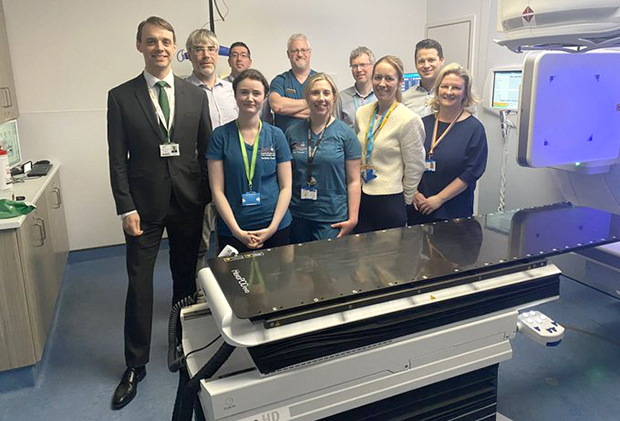CUH affords new superior radiation remedy for liver most cancers sufferers
New programmes delivering extra exact and efficient radiation remedy to Irish sufferers might start to endure if staffing shortages amongst radiotherapists can’t be addressed, a number one clinician has warned.
Cork College Hospital (CUH) not too long ago grew to become the primary public well being service within the nation to supply Stereotactic Physique Radiation Remedy (SBRT) to sufferers with liver tumours. This new remedy could also be used to deal with sufferers with medically inoperable major and secondary liver cancers.
Guide radiation oncologist at CUH, Prof Aisling Barry, instructed IMT that, with a purpose to present this life-saving remedy, radiation therapists play a significant position.
“Inside the radiotherapy division it’s very multidisciplinary, so we’re very reliant on our radiation therapists and likewise our medical physicists to make sure that this service runs,” she stated.
“Programmes like this may occasionally endure if we don’t have acceptable staffing for the longer term. In the meanwhile we’re doing advantageous, however they’re very key, necessary individuals inside the group to ship one of these care.”
She added: “Over the following couple of months we may be challenged with individuals and therapists. We’re nonetheless understaffed, however we’re surviving”

Pictured at Cork College Hospital (CUH) are the multidisciplinary group behind the introduction of Stereotactic Physique Radiation Remedy (SBRT) for sufferers with liver tumours in CUH. This radiation remedy could also be used to deal with sufferers with medically inoperable major and secondary liver cancers – fully remodeling the remedy choices presently accessible. CUH has develop into the primary public hospital in Eire to start providing this revolutionary remedy for sufferers with liver tumours
In March IMT reported that CT scanners and linear accelerator radiation remedy machines had been mendacity idle as a result of hospitals had been struggling to fill vacant radiation remedy positions.
Prof Barry instructed IMT that CUH has not too long ago obtained funding for an additional two linear accelerators, which it hopes to have up and operating inside the subsequent couple of years.
Since Might the hospital has additionally began treating liver most cancers sufferers with SBRT. Utilizing excessive beams of power, SBRT rigorously targets tumours, damaging the DNA of their cells to stop them from rising or multiplying. This method is painless and non-invasive, and affords a comparatively non-toxic and quick course of radiotherapy for sufferers.
“One of many challenges with radiotherapy prior to now was that it was very tough to radiate the liver with out inflicting liver hurt, as a result of we didn’t have as exact a way,” Prof Barry added.
“Now we will focus our beams a lot better into a lot smaller areas, which implies that we will deal with simply the illness, whereas sparing all the opposite regular areas round us, like the conventional tissue of the remainder of the liver.”
CUH is the primary public hospital within the nation to supply this remedy, with St Luke’s Hospital in Dublin additionally set to supply SBRT within the coming months.
Sufferers receiving SBRT at CUH achieve this on the Glandore Centre, which opened its doorways in 2019, and sees roughly 2,000 sufferers every year. The centre already affords Floor Guided Radiation Remedy (SGRT), which hurries up and improves the accuracy of remedy, and supplies a extra snug expertise for sufferers. CUH was the primary tattoo-less radiotherapy centre within the nation because of this SGRT system, which was donated by Support Most cancers Remedy (ACT).
Greater than 300 individuals are identified with liver most cancers every year in Eire. Nonetheless, figuring out the variety of sufferers who would profit from SBRT stays a problem as detailed information is restricted.
“We don’t have good information for liver most cancers in any respect on this nation,” stated Prof Barry. “We do clearly have the NCRI (Nationwide Most cancers Registry of Eire) information, however the problem with liver most cancers is that it’s not pathologically identified. It’s radiologically identified for almost all of sufferers. So that you typically do miss out on sufferers that don’t have a pathological prognosis within the information.
“What I’ve seen as properly is that there are sufferers that develop fairly superior illness in the neighborhood. They by no means truly make it to Cork or to Dublin for assessment as a result of their illness is simply too far superior, so we miss out on that group. We’d like higher information for these sufferers.”